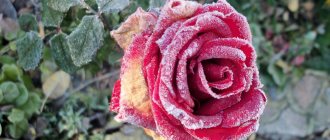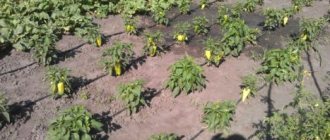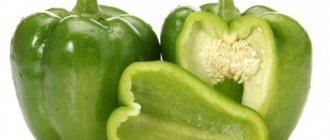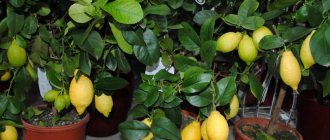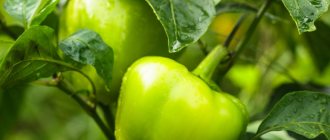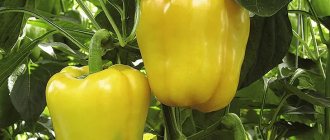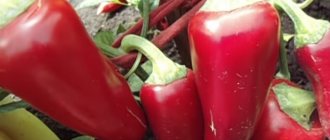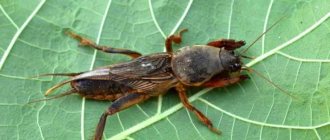When growing plants, every gardener is faced with the peculiarities of agricultural technology for each crop. But even after fulfilling all these conditions, you may encounter various crop diseases that seriously affect the harvest. We will look at what pepper diseases can be - photos and their treatment. What to do to prevent them.
Pepper belongs to the Solanaceae family and suffers from the same diseases as its other representatives. The only difference is that he reacts more or less to some diseases.
What diseases can affect pepper:
- Fungal.
- Bacterial.
- Viral.
The main cause of all emerging diseases is violation of the rules of planting and care. Another important point is feeding, since a lack of nutrients causes a significant portion of diseases.
Specifics of the spread of pepper diseases
In the middle zone, the most common diseases of sweet pepper are: gray and white rot, blossom end rot. In the southern regions, plants are affected by root rot and stolbur.
In the Far East and Eastern Siberia, the crop is more often affected by black bacterial spot, and in Western Siberia - by white and brown spot. The fight against sweet pepper diseases should begin at the first signs of disease. Only timely measures can stop the development of the disease.
Diseases of pepper seedlings
Seedlings are like a child who needs to be protected in every possible way and prevent all possible problems. Therefore, it is important to know what you can encounter when growing pepper seedlings.
Typical diseases of pepper seedlings:
- blackleg;
- white, gray and apical rot;
- cladosporiosis;
- late blight;
- fusarium and sclerocinia;
- powdery mildew;
- verticillium wilt of pepper;
- black bacterial spot;
- fulminant bacterial wilt;
- soft bacterial rot;
- pepper bacterial cancer;
- tobacco mosaic;
- stolbur.
Diseases in pepper seedlings often occur due to violation of growing rules and careless actions: a broken branch, a damaged root during cultivation or planting, a lack or excess of microelements in the soil, improper watering.
In case of mechanical damage, you can adjust the cultivation technology and everything will return to normal. With an infectious disease, much more measures need to be taken, because they spread to other plants and, accumulating in the soil, can affect crops planted in this place for several years.
A more detailed description with photos of each pepper disease (including seedlings) is given below in the article.
Disease Prevention
Carrying out preventive measures will definitely give positive results. It has long been known that preventing a problem is the best solution. Peppers also have some recommendations for disease prevention.
- The first preventive measure is carried out in the fall - the ground is dug up to about 25 cm in depth. This is a standard procedure that allows you to destroy most fungal diseases and pests. They will simply die in the cold.
- The second important approach when growing peppers is to follow the rules of crop rotation. They cannot be planted in one place for two years in a row. And they are also not planted after other Solanaceae. Otherwise, diseases accumulate and the risk of damage tends to 100%.
- The third most important procedure is proper watering. A drip irrigation system would be ideal. Overmoistening leads to putrefactive phenomena on the plant, so you need to do this extremely carefully and if there is a lot of rain, it is better to stop watering altogether.
Even following such simple rules can prevent up to 90% of all possible diseases. Now let’s look at the main diseases and measures to combat them.
Causes of pepper diseases
The main cause of disease is most often improper care. Since pepper is native to tropical countries, the plant requires favorable growing conditions. But creating them is not so easy.
Improper care
Errors in performing agrotechnical work on growing pepper can increase the likelihood of developing diseases:
- improper preparation of beds;
- mistakes when growing seedlings;
- sowing infected seeds;
- high humidity;
- non-compliance with the watering regime;
- lack of ventilation;
- improper application of fertilizers.
All these points lead to a decrease in the immunity of peppers. Metabolic processes in plants are disrupted, and the risk of developing diseases increases accordingly.
Failure to comply with crop rotation
If you do not follow the rules of crop rotation in your garden, the soil will become filled with various toxins and secretions that can negatively affect new plantings. Bacteria, infections and pests remain in the soil, which lead to the death of plants. It is for this reason that you cannot plant pepper in one place for several years in a row.
When growing peppers, the following crop rotation rules are observed:
- pepper is grown in one place once every 3 years;
- after the peppers, carrots, onions, zucchini, cucumbers, and cabbage are planted;
- after harvesting, green manure is sown, the greens of which are plowed in in the fall;
- in the second year, cruciferous or legume crops are planted.
And only 3-1 years later, pepper seedlings are planted again.
Nutrient deficiencies
If peppers do not receive the proper amount of nutrients, their resistance to disease decreases.
On a note!
Often, inexperienced gardeners confuse spots on the leaves from a lack of nutrients with diseases.
The most dangerous is nitrogen deficiency. It leads to the degeneration of chlorophylls, which leads to disruption of photosynthesis. Lighter colored spots appear on the leaves of the seedlings. Also, a lack of nitrogen causes depression of the entire plant. And weakened peppers are most susceptible to diseases and pests.
To avoid this phenomenon, the area is well fertilized with nitrogen-based compounds. Mineral fertilizers are applied a week before planting seedlings. 10-14 days after planting, water with a liquid solution.
Potassium deficiency also affects plant immunity and growth. A deficiency of this element is manifested by yellowing of the edges of the leaves. Phosphorus is also important for plant nutrition. With its deficiency, the leaves acquire a purple tint. Boron is required for the development of pepper. With its deficiency, the fruits and leaves are deformed, and the foliage gradually drops.
If pepper lacks nutrition, it does not develop, and its resistance to pathogens decreases.
Late blight
In the north and central region, sweet peppers are quite resistant to this disease and, when grown in a greenhouse in a monoculture, are practically not affected by it. But if it grows together with tomatoes or there are potato plants next to the greenhouse, then the bell pepper can also get sick, but late blight does not harm it as much as it does tomatoes.
In the southern regions, the disease can manifest itself independently, without its symptoms appearing in other crops. It affects plants both in open and protected ground.
The causative agent is a pathogenic fungus that lives in the soil and on plant debris. The source of infection can be seeds, as well as other crops infected with late blight.
Conditions of defeat
Mass infection occurs in the second half of summer, although in the southern regions late blight can appear even on seedlings. In the northern regions, its appearance is facilitated by cool weather combined with high air humidity, in the southern regions by heat and heavy rains.
Signs of illness
Stems, leaves and fruits are affected. Brown stripes with jagged edges appear on the stems, which ring it.
Brown-brown spots without clear boundaries appear on the leaves, which quickly merge. The leaf turns black.
Small brown spots appear on the fruits, which then quickly grow, the tissue wrinkles and becomes soft and thin to the touch.
Depending on the weather, the affected areas either rot or dry out. The affected bush itself dies.
Measures to combat late blight
Treatments should be started not when the first signs of the disease appear, but when the risk of its occurrence increases (heavy rains or cool weather).
- Consento or Previkur. Plants are sprayed with Consento solution 4 times with an interval of 10 days. Previkur solution is used to water plants at the roots every 10 days when there is a high risk of disease.
- Copper preparations (except Bordeaux mixture) perfectly protect peppers from late blight. Carry out 2-3 treatments per summer. Copper-containing preparations can be alternated with fungicides of other groups.
- Use of drugs Metaxil, Bravo, Quadris.
- Treatment with biological products: Fitosporin, Baktofit, Pseudobacterin, Trichodermin. Trichodermin and Pseudobacterin give especially good results. In order for the biological objects to remain on the plant and begin to work, adhesives (gelatin, starch glue, fat milk) are added to the working solution. You cannot add laundry soap, since it, having an alkaline reaction, destroys beneficial microflora.
Main pests of pepper
It's not just people who appreciate the taste of pepper. Numerous pests enjoy eating all parts of this crop.
Whitefly
A very dangerous insect causes enormous damage to greenhouse crops.
Numerous whitefly larvae quickly drink all the juices from the plant. The pepper foliage curls and dries out. The greenhouse whitefly reproduces intensively in hot environments. In a stuffy greenhouse, the pest population quickly reaches epidemic proportions. The insect is a carrier of a mold fungus that inhibits plant growth.
When fighting whiteflies, washing the foliage with clean water is very effective. Spraying is carried out generously to wash off accumulations of pests from the surface. After the procedure, the soil is immediately loosened and mulched with sand, peat, and humus. The layer is lined with at least 2 cm.
After harvesting, the plants on which the insects nested are removed and burned. All other crops are treated with herbicide.
Spider mite
The pest is very passionate about greenhouse peppers. Hiding under the foliage, the entire lower part of the mites is covered with cobwebs. Inconspicuous whitish dots appear on the sheets, gradually growing into spots. The pepper leaf turns yellow and dries out.
Due to the fault of the mite, flowers and ovaries fall. Even the fruits themselves are affected by the insatiable pest. If measures are not taken in time, the entire bush will die.
Plants affected by mites are burned, and the premises are treated with bleach. Treatment with the biological product Fitoverm has a positive effect. Pesticides used include Karbofos, Fufanon, and Actellik.
Among the folk remedies, gardeners most often use a soap solution, spraying peppers with it. Good reviews about the infusion of garlic, onion, and dandelion.
Slugs are naked
Slugs are interested in the fruits and foliage of the crop. By eating holes in them, pests simultaneously stain the plant with mucus. Damaged pepper fruits rot quickly.
To destroy a mollusk, it is not necessary to use chemicals. There are several gentler ways:
- Protective ramparts are erected around the plants. They are formed from lime and sand, which burn the pest;
- The beds are also sprinkled with ground black pepper or mustard;
- Parsley is planted between the bushes;
- Some gardeners scatter coffee slurry and mulch the beds with sawdust.
Chemicals used include granular metaldehyde or Strela.
Aphid
This pest completely occupies the entire plant, every part of it: leaves, flowers, fruits, stem. At first, aphids colonize the more delicate parts - flowers, ovaries. Having drunk all the juices from them, the insect causes irreparable damage to the crop. Gradually, the pest takes over the entire plant, and eventually it dies.
The predecessors of aphids are black ants. They are the ones to blame for its invasion. By detecting and destroying ants in the greenhouse, you can prevent the appearance of aphids.
The extermination of pests is carried out with insecticides, such as Decis, Keltan, Karbofos.
Of the folk methods, the most popular are treatments with infusions of nettle, wormwood, and tobacco. Spray the peppers with soapy water and ash.
Blackleg
More often found in seedlings and large bushes when grown in a greenhouse. Caused by various pathogens that spread in the soil through the remains of other plants. The occurrence of the disease can be triggered by insufficient ventilation of the greenhouse and by dense planting.
This disease can be identified through a rotting and drying stem, first in its lower part. To detect it in a timely manner, it is important to inspect plants as often as possible.
Prevention consists of treating the seeds and soil with a manganese solution before planting seedlings. The bushes should not be over-watered, and if planted densely, it is necessary to thin out
Provoking factors
Bell peppers are affected by diseases when grown in open ground and in greenhouses. The main reason for decreased immunity is inappropriate care.
Factors contributing to the development of diseases:
- contaminated planting material or soil;
- frequent watering, stagnation of moisture in the soil;
- lack of regular ventilation in the greenhouse;
- using cold water for irrigation;
- lack of fertilizing;
- sudden changes in temperature;
- increased concentration of nitrogen in the soil;
- dense plantings;
- non-compliance with crop rotation;
- lack of light;
- inconsistency of climatic conditions;
- close proximity to diseased plants.
Gray rot
Appears on the lower part of the stems in the form of brown spots. Over time, they become covered with a gray coating. The spores of this fungus can be stored for quite a long time, and they are also carried by insects, wind and water.
At high humidity and temperature, they begin to develop and infect pepper bushes. More typical for the greenhouse growing method.
How to fight:
- Plant seedlings in a timely manner, ventilate the room and do not plant seedlings too densely.
- At the earliest stages, pepper bushes are treated with chalk or crushed activated carbon.
- Affected plants are removed.
- Garlic tincture also helps well.
Prevention measures
The best way to avoid treating plants is to take preventive measures in time. They will strengthen the pepper’s immunity and make the fruits more healthy and tasty.
Gardeners recommend:
- Plant peppers using seedling method. To do this, disinfect the seeds with a solution of potassium permanganate, purchase a special seedling container and etch the soil. The seedlings are watered and fertilized, kept in warm and sunny light. Peppers planted in seedlings suffer less disease and are characterized by rapid and consistent fruiting.
- Choose a variety based on the climatic conditions of the region . In some regions, varieties that are resistant to sudden weather changes are chosen: Atlant, Funtik, Accord; in others, any peppers are planted - the warm and temperate climate allows this. It is recommended to read the planting guidelines on the package.
- Before planting, disinfect the beds - remove weeds and remains of last year's plants, dig up the beds. If the soil is acidic, it is recommended to add lime and wood ash.
- Follow the rules of crop rotation - do not plant peppers in one place for more than three years in a row. The best predecessors for planting are cabbage, carrots, and peas. It is not recommended to plant sweet peppers after potatoes or tomatoes.
- Regularly care for the beds: water, fertilize, loosen and weed. If the variety requires it, it is formed into one or two stems. Not only protection from diseases, its taste and quality of pepper depend on proper care.
In the middle zone and in the north, bell peppers are planted in a greenhouse, in the south of the country - in open ground.
Streak (streakness)
The causative agent is a virus. It affects fruits, petioles and stems mainly in the upper part of the bush.
Conditions of defeat . The virus manifests itself regardless of weather conditions. More often the disease occurs in the second half of summer. It is spread by insects. Greenhouse peppers suffer more from streaking.
Signs of defeat
The first signs appear in July. Light gray or brownish streaks appear on the fruits, unevenly distributed throughout the peppercorn.
Strokes appear on the stems and petioles a little later. As a result, they become bent, cease to perform their functions and break.
The tissue at the site of the lesion becomes corky, and the strokes themselves acquire a light brown color. The fruits become unsuitable for food.
Spreading . The streak spreads quickly, and by August all the plants in the greenhouse may become diseased.
How to fight the disease
Since the virus lives and multiplies inside cells, it is necessary to use only systemic drugs. The only drug that acts on the virus is Farmayod. But fruits cannot be treated with it, since the iodine contained in the preparation causes severe burns to the skin of the fruit and leads to its rotting.
Therefore, processing is carried out only after removing all the fruits of technical ripeness. 5 ml of Farmayod is dissolved in 10 liters of water and the plants are thoroughly sprayed. The treatment is repeated after 10 days, after removing healthy fruits.
Since Farmayod contains a high concentration of iodine, burns and death of leaves and plants are possible if the working solution is not prepared correctly.
Folk remedies
In the early stages of the disease, treatment with a pink solution of potassium permanganate is very effective. Treatment is carried out 3 times with an interval of 7 days. If affected petioles and peppercorns continue to appear, then proceed to treatment with Farmayod.
Viral infections
Pepper diseases caused by viruses are not spread by insects. But they are very easily transmitted when transplanting crops.
Leaf curl
Otherwise, the disease is called cucumber mosaic, it comes in different types:
- Transient. When a plant quickly dries out in its green state.
- Brown. The culture is affected at the budding stage and, when dry, acquires a brown tint.
- Yellow. Shoots and leaves turn yellow and become deformed, the crop does not grow, and ovaries do not form.
- Dwarf. The plant grows slowly, the leaves are small and unsightly, there are few fruits, they are ugly in appearance.
Remove and burn diseased plants, and treat the remaining ones with Aktelik, Fitoferm, etc.
Mosaic
Signs of the disease may include deformation of the leaves, their curling downwards and a mosaic color. Plant development slows down. Necrotic stripes are observed on the stems and fruits, and the yield decreases.
Tobacco mosaic on pepper leaves
The causative agent of the disease may be in the soil. Disease prevention is carried out.
Stolbur (phytoplasmosis)
Symptoms of the disease will be the leaves curling upward and drying out. The disease begins to appear in the upper part of the plant and gradually spreads to the entire bush.
Deformed fruits begin to ripen prematurely. The virus is spread by pests. To combat the disease, affected plants are destroyed and the soil is disinfected.
Streak
Streak is a type of mosaic. It affects the fruits and the top of the plant. The development of the crop slows down, the leaves become deformed. Red-brown streaks appear on all parts of the plant. Gradually they begin to crumble.
The disease spreads very quickly. It is almost impossible to cure the plant.
There is a drug called Farmayod, which can be used only after harvesting healthy, technically ripe fruits.
Root rot
Root rot is very common in the southern regions and almost never in the middle zone and to the north.
A group of diseases caused by either pathogenic fungi or bacteria.
Favorable conditions for the development of the disease
They appear when plantings are thickened and the soil is poorly ventilated. Root rot can occur when the concentration of fertilizer solution applied under the root is too high. As a result, the roots are burned, necrosis and cracks form on them, through which pathogens penetrate inside.
Other reasons are severe waterlogging and frequent rains, when the soil does not have time to dry out; mechanical damage during loosening.
Rot affects peppers throughout the growing season.
Pepper disease in a mosaic greenhouse: photo, description and treatment
The causative agent of this pepper disease in greenhouses is tobacco mosaic virus (TMV). The high harmfulness of the virus is explained by its exceptional infectivity and vitality. Losses from this virus in an epiphytotic year can reach up to 90% of the crop.
Symptoms at the first stages of a plant’s life appear in the form of vein necrosis and mosaic leaves; soon chlorosis spreads to the entire surface of the leaves, and the plant lags in growth.
Look at the photo - with this pepper disease in a greenhouse, dark stripes and necrosis develop on the stems and petioles of plants, and the fruits decrease in size:
Some engraving appears on the leaves associated with vascular necrosis. The virus is transmitted on plant debris and can be stored for up to 50 years under appropriate conditions. It is carried by sucking insects and mites, and is transmitted to the greenhouse through contact during plant care.
In order not to resort to treating this pepper disease in a greenhouse, advanced agricultural technology will help. You only need to plant healthy seeds that have been heated for 3 days at a temperature of at least 70 °C. Extracts of oyster mushrooms and aloe juice are recommended for soil treatment.
Cladosporiosis
More common when grown in a greenhouse. It is spread by spores that can enter the soil through gardening tools, wind, plant debris or insects.
It appears as brown spots on the outer part of the leaves, and a gray coating appears on the inner part. Leads to rotting of the stem and fruit.
As soon as the first signs appear, you need to reduce the amount of watering, ventilate the greenhouse more often and spray the bushes with antifungal drugs.
Bacterial diseases
Bacterial infections can affect the stems and leaves of pepper at any time from the emergence of seedlings to the ripening of the crop, provided that the humidity rises above 80% against the background of a decrease in air temperature.
The main signs of a bacterial infection on pepper seedlings are:
- the formation of spots of different shades on the lower leaves;
- changing the color of the underside of the leaves from green to purple.
Black bacterial spot
The formation of small black spots on the leaves and stems of pepper seedlings indicates infection with black bacterial spot. At the next stage, the black spots become single, after which the pepper dies. A favorable environment for the development of the disease is created by high humidity, both soil and air.
Black bacterial spot
To prevent damage to seedlings, it is necessary to take measures even before sowing by treating the seeds (disinfection). If the disease manifests itself immediately after germination, the affected stems are removed and the soil underneath is disinfected.
To avoid contamination of the soil on which it is planned to grow sweet peppers, it is necessary to carry out disinfection work systematically (at least once a year).
Fulminant bacterial wilt
If pathogenic bacteria enter the plant’s vascular system, toxic products are released and the access of nutrients to different parts of the seedling is blocked. If you cut the stem, a white liquid will begin to appear from it.
Lightning Wither
Effective means of preventing the disease are:
- treatment of planting material with garlic solution (recipe given above);
- soil disinfection;
- spraying seedlings with preparations containing copper;
- timely elimination of disease-affected stems.
Soft bacterial rot
The disease can quickly attack pepper seedlings and affect the entire plant, destabilizing the functioning of the vascular system. In the event of a lack of nutrients, the following processes occur:
- leaves begin to wither and die;
- the color of the stem changes;
- the stem becomes empty inside.
Soft bacterial rot
In a humid climate against the backdrop of high air temperatures, the processes of destruction of the plant structure are accelerated several times.
Preventative work to prevent soft bacterial rot should include:
- processing of planting material and soil disinfection;
- regular ventilation of the room;
- watering plants in moderation;
- timely removal of the remains of dead plants - a potential breeding ground
- pathogenic microorganisms.
Bacterial cancer
The development of the disease can be triggered by excess temperature conditions against the background of high air humidity and excessive density of seedlings. Under such conditions, the bacterium, which can enter the seedlings through gardening tools or be introduced by insects, multiplies very actively and manifests itself with the following symptoms:
- the appearance of brown spots with a light center;
- merging of small spots into a single whole and covering with a crust.
Bacterial cancer
After detecting the first symptoms of bacterial pepper cancer, you must:
- treat the seedlings with copper sulfate, oxychloride or any other preparation that contains copper;
- eliminate all plants, regardless of the degree of their damage;
- After detecting a disease on plants, treat the soil with methyl bromide 2 times a year.
Fusarium
The disease begins with damage to the roots of the peppers, and then the passages inside the stem close. As a result, the plant first sheds its leaves and then dries out - this is the main external sign of this disease.
The disease develops with excess humidity and sudden temperature changes. It is quite difficult to determine the initial phase, so already affected bushes are removed from the beds and the soil is treated with antifungal drugs. The same methods as for late blight will also work.
Viral diseases
The main distributors of viruses are insects - aphids, thrips, nematodes. Diseases of this nature are less common, but they pose a greater threat.
A distinctive feature of such diseases is the infection of plant cells by the virus. Which ultimately leads to pathologies in the development, growth and deformations of different parts of the bushes.
Tobacco mosaic
This disease got its name because the virus destroys chlorophyll. As a result, spots appear that form a marble pattern on the leaves. Plant cells gradually die.
What to do to fight:
- Treat the seeds before planting.
- When picking and replanting, avoid damage through which the virus can penetrate.
- From time to time it is necessary to treat the bushes against pests that carry this disease.
- Plant remains must not be left in greenhouses and the premises and soil must be disinfected regularly.
One week before transplanting, pepper seedlings are treated with boric acid. This procedure is repeated again a week after planting.
Stolbur
The second name is phytoplasmosis. It appears from the upper shoots of pepper; the edges of the leaves curl up and dry out. Subsequently, this spreads to the entire bush of the plant, the fruits take on an irregular shape and turn red ahead of schedule.
The causative agents are insects, so the main fight takes place with them. Affected plants must be removed and disposed of, and after harvesting, the soil must be treated with special preparations.
Source: researchgate.net
Source: researchgate.net
Apical rot
A disease caused by a lack of calcium in the soil. It is especially common on sweet peppers in the northern regions, where the soils are poor in this element. On chernozems, blossom end rot is much less common.
What causes blossom end rot?
The disease on peppers appears at the beginning of fruiting.
- Lack of calcium in the soil.
- Water containing a lot of iron. Iron reduces calcium absorption.
- Rare watering. Bell pepper does not tolerate drying out of the soil and when humidity decreases, all elements, and calcium in the first place, cease to be absorbed.
Large-fruited, thick-walled, late-ripening varieties are more affected because they require much more calcium than normal.
Signs of defeat
Appears only on green fruits, mainly in greenhouses. When grown in garden beds in greenhouses, the disease appears less frequently and only on some plants.
At the top of the green fruit (where the flower was) a light brown spot appears, which gradually increases in size and acquires a richer brown color. The stain gradually grows, the tissue wrinkles, presses in and dries out.
However, in most cases, the spot does not appear at the top but on the side closer to the tip of the fruit. It also gradually grows along the side surface and dries out.
Affected fruits quickly turn red, but become tough and tasteless.
How to prevent this sweet pepper disease
Measures to combat the disease consist of increasing the dose of calcium in fertilizing. Use calcium nitrate for spraying or applying under the root. Sweet peppers in northern regions are more sensitive to calcium deficiency than tomatoes grown with them in the same greenhouse. Therefore, fertilizing is done every 15 days until the end of fruiting.
For large-fruited, thick-walled peppers, the calcium norm during the fruiting period increases by 1.5 times.
Now there are calcium preparations in the form of a suspension that are used for foliar feeding: Vuksal Calcium, Kalbit S. They contain from 15% to 24% calcium and completely eliminate blossom end rot.
Folk remedies
Ash is very effective in preventing and treating disease. Those who feed peppers with it or add it to the holes when planting sweet peppers do not suffer from blossom end rot.
For 10 liters of water take 10 glasses of ash. The solution is either boiled for 15 minutes or left for 24 hours, stirring regularly. It is advisable to simultaneously water the peppers at the root and spray them.
Non-communicable diseases
Pepper diseases caused by unfavorable climatic conditions are classified as non-infectious diseases.
Non-communicable diseases are caused by the following conditions:
- lack of nutrients
- temperature changes,
- lack or excess of sunlight.
We recommend watching how to care for indoor peppers.
Pepper blossom end rot
Watery spots form on the tops of plants, then they dry out. The cause of blossom end rot in peppers is calcium deficiency. The disease can be triggered by changes in air humidity, excessive application of nitrogen fertilizers, and uneven watering.
To combat the disease, remove the affected areas of the plants and spray with 0.3-0.4% calcium chloride.
Dropsy
Another name for it is oedema or edema. Plants develop growths on the back of the leaves and stems. Occurs in seedlings under unfavorable conditions.
The reasons are:
- lack of lighting,
- excessive watering, find out what kind of water and how often to water the peppers,
- lack of nutrients.
When transplanting seedlings and proper care, everything returns to normal.
White rot (sclerotinia)
On peppers it is less common than other types of rot. It affects the stem and sometimes the fruit. The causative agent is the pathogenic fungus sclerotinia.
Favorable conditions for the appearance of white rot
Sudden changes in air temperature and high humidity. Distributed mainly in greenhouses. The most dangerous periods are immediately after planting, if the weather is cold, and when the lower fruits ripen.
Signs of disease on pepper
It can develop on any part of the stem, although it is more often localized in the root zone. A white fluffy coating appears on the affected area, and black spots are visible on the cut, which later soften and become slimy. The tissue becomes watery and wrinkles. The bush dies.
Fruits are only affected when they come into contact with the ground. Diseased peppercorns become soft, thin, watery, and subsequently a white coating appears on them. The diseased fruit rots and falls off.
White rot spreads in patches and does not affect all peppers at once.
Control measures
Sweet peppers are not as severely affected by white rot as tomatoes. Therefore, it is enough to spray it with biological preparations Trichodermin or Fitosporin.
If the lesion is more extensive, then use Planriz, Gamair. The white coating is cleaned off, and the stem is coated with a paste containing chalk or charcoal.
If the fruits are damaged, the diseased peppercorns are removed, the rest are sprayed with copper preparations: OxyHOM, Ordan.
Disease prevention
In cold weather, peppers are additionally covered with straw or covering material. Humidity is maintained at 80%. All leaves are cut up to the fork, and the bush itself is thinned, removing excess branches.
Diseased fruits are removed and burned. When the peppercorns come into contact with the ground, hay, straw or just cardboard is placed under them.
Folk remedies . Spray with a strong solution of potassium permanganate or iodine 10 ml/10 l of water.
Classification of diseases
Diseases of pepper seedlings are classified depending on the source of the disease:
| Infectious | Non-infectious |
| Fungus | Untimely watering |
| Bacterium | Temperature violation |
| Virus | Excess or lack of fertilizers |
| Physical damage to the stem |
Non-infectious diseases of sweet pepper seedlings are not transmitted to neighboring plants and are easily eliminated by returning to the agrotechnical requirements for growing seedlings. Infectious diseases spread quite quickly and can completely destroy a plant without taking appropriate measures.
Alternaria blight (brown spot, macrosporiosis)
Found in Siberia. Bell pepper affects both in the greenhouse and outdoors.
The causative agent is a pathogenic fungus that survives on plant debris and seeds.
Conditions for the appearance of the disease . Hot summer (above 25°C) with short rains and heavy dew.
Signs of defeat
Leaves and fruits become diseased. The disease begins on old leaves. Small angular brown spots appear along the veins, which gradually grow and merge with each other, covering the entire affected leaf. The damage spreads from the leaves to the fruits.
On the peppercorns at the base, where the stalk is attached, a watery green spot appears, which subsequently grows, darkens and is pressed inward. Sometimes a stain may appear not at the stalk, but in the center of the peppercorn. The spot becomes brown, lighter in the center than at the edges. In advanced cases, areas with a black mold-like coating appear in the center of the spot - fungal sporulation. The fruit dries out.
Control measures
Alternaria blight on sweet peppers is not as harmful as other types of blight. It develops slowly, and when hot and dry weather sets in, its development stops.
When the disease appears, spraying with copper preparations is carried out: Ordan, Abiga-Peak, Bordeaux mixture, HOM. Treatments are carried out depending on the weather. In rainy weather, apply 2 times with an interval of 10-14 days. When warm weather sets in and there is no dew, limit yourself to one spraying.
Treatment with Kartotsid, Ridomil Gold, Previkur, Kurzat.
Prevention
- Seeds must be treated before sowing.
- The greenhouse is thoroughly ventilated so that there is no dripping moisture on the peppers; the bushes should not be watered by sprinkling.
Folk remedies . For preventive purposes, spray the bushes with a pink solution of potassium permanganate or iodine (10 ml per bucket of water).
Pests
In open ground and greenhouses, bell peppers can be attacked by phytophagous insects. Pests cause significant damage to vegetable growing, and with a sharp increase in the population, they can completely leave the gardener without a harvest.
Nematodes
Nematodes are classified as roundworms. They are parasitic on many plants, including sweet peppers.
There are three types of nematodes: root, stem and leaf. Most often, nightshade crops are affected by a pest that parasitizes the roots of plants.
Spread occurs through contaminated soil, soil and seed. More often found in greenhouses due to the difficulty of maintaining crop rotation.
Peppers affected by the pest stop developing and chlorosis appears on the leaves. When removing a diseased plant from the ground, galls, which are spherical thickenings, can be found on the roots.
Today there are few sufficiently effective means of protection against nematodes. Traditional insecticides and fungicides do not work on the parasite, as it is a roundworm.
To combat the pest, the chemical substance Vidat or the biological product Nematophagin Mikopro are used.
Observing crop rotation, checking plant roots at the end of the season, using mustard powder (half a glass of mustard per hole), and adding Lepidocide or Bitoxibacillin to the soil will help to avoid the accumulation of nematodes.
Spider mite
Favorable conditions for the appearance of spider mites on peppers are dry, hot weather with temperatures above +30 degrees. Most often, the pest is found in greenhouse conditions or in open ground in the south of the country.
The parasitic population of spider mites manifests itself on the plant with such signs as yellow specks on the leaf blades, a gray coating on the inside of the leaves that looks like dust, and a barely noticeable cobweb on the above-ground parts of the pepper.
Vermitek, Karbofos, Antiklesch, Sunmite and other acaricides are used against arachnid pests. Carry out 3 treatments with an interval between each of 7-10 days. It is advisable to alternate drugs so as not to cause resistance in the parasite.
Aphids
Aphids are most often found in greenhouse conditions. The spread of pests is soil contaminated with their larvae.
Ants can contribute to the proliferation of aphid populations. The latter feed on the sweet honeydew secreted by insects and act as their natural protectors. When fighting aphids, first of all you need to destroy all anthills in your garden plot.
The pest is a carrier of viral diseases that threaten the complete death of plants.
When pepper is infected by aphids, a sticky honeydew appears on the vegetative organs, the leaf plates curl, the buds do not open, and the flowers that appear become deformed and fall off.
To destroy pests, insecticides such as Intavir, Actellik and Karbofos are used. In greenhouses, peppers are treated with Clipper. Biological products used include Fitoverm, Entobacterin, and Actotsid.
Cutworm caterpillars
Caterpillars feed on leaves, stems, and roots of peppers. During the daytime they hide in the ground, and at dusk they crawl out.
Cutworms infect plants in greenhouses, greenhouses and open ground. Increased moisture contributes to a rapid increase in the pest population.
To combat cutworm caterpillars, they use the drugs Herold, Alatar, Decis Profi, Initiator 200.
Thrips
The main signs of the appearance of thrips on pepper are deformation of the leaf blades, the appearance of yellow spots on the leaves, and the falling of flowers.
To destroy the pest, peppers must be treated three times with an interval of 10 days with preparations such as Aktara, Fitoverm.
Bedbugs
The pest bites through the pepper fruits and injects poisonous juices. Pepper becomes unsuitable for food, as it acquires a bitter taste and specific smell, and quickly rots.
Insecticides used against pests such as whiteflies and aphids are effective against bedbugs.
Nightshade miner
The pest attacks hot and sweet peppers, both in open and closed ground. Nightshade miner larvae pose a danger to plants. They penetrate into leaf blades, gnawing holes in them.
Favorable conditions for the development of the pest are temperatures from +25 to +30 degrees.
Such remedies as Spinosad, Vermitek, Varant, Tianid are effective against nightshade miner on peppers.
Slugs
Favorable conditions for the reproduction of slugs are temperatures up to +25 degrees and high humidity. The pest feeds at night.
Mollusks gnaw through leaf plates, leaving holes of different sizes on them. The fight against them is carried out with the help of drugs Slug Eater, Thunderstorm Meta, Ferramol.
Wood ash or slaked lime will also help get rid of slugs. The substances are sprinkled on the soil around the pepper bushes.
Wireworm
These pepper pests are click beetle larvae. They live in the ground at a depth of 10-12 cm, feeding on the roots of nightshades and other vegetable crops.
Effective methods of controlling wireworms are the use of drugs and sowing green manure. For prophylactic purposes, Zemlin and Vallar are used.
It is possible to remove the pest using green manure only the next season after its detection.
After harvesting and removing plant debris from the area, rye or mustard is sown. They serve not only as a fertilizer, but also as a means against wireworms. In the spring, after green manure shoots emerge, the area is dug up, after which seedlings can be planted.
Powdery mildew
The disease is more typical for the greenhouse growing method. Large, irregularly shaped spots form on the upper parts of the leaves and become covered with a white coating. As the disease develops, the leaves become completely covered with it, become deformed, dry out and fall off. The plant may lose all its foliage. The disease actively develops in dry weather at high temperatures and low humidity.
Control measures:
- It is necessary to create the necessary growing conditions - regular watering and irrigation of plants.
- Diseased parts of the plant are removed, and the soil and the entire greenhouse structure are disinfected.
- After detecting the disease, at the initial stage, provide high humidity and treat the bushes with fungicides, contact and systemic.
Fungal diseases
These are the most common diseases in peppers and other representatives of the Solanaceae. Their share among common diseases reaches 80%. This is due to the fact that fungal spores are easily carried by various insects and wind. They are also stored in the soil for a very long time and, when favorable conditions are created, begin to develop, affecting plants.
Blackleg
More often found in seedlings and large bushes when grown in a greenhouse. Caused by various pathogens that spread in the soil through the remains of other plants. The occurrence of the disease can be triggered by insufficient ventilation of the greenhouse and by dense planting.
This disease can be identified through a rotting and drying stem, first in its lower part. To detect it in a timely manner, it is important to inspect plants as often as possible.
Prevention consists of treating the seeds and soil with a manganese solution before planting seedlings. The bushes should not be over-watered, and if they are planted densely, they must be thinned out.
Gray rot
Causes: Botrytis cinerea
Appears on the lower part of the stems in the form of brown spots. Over time, they become covered with a gray coating. The spores of this fungus can be stored for quite a long time, and they are also carried by insects, wind and water.
At high humidity and temperature, they begin to develop and infect pepper bushes. More typical for the greenhouse growing method.
How to fight:
- Plant seedlings in a timely manner, ventilate the room and do not plant seedlings too densely.
- At the earliest stages, pepper bushes are treated with chalk or crushed activated carbon.
- Affected plants are removed.
- Garlic tincture also helps well.
Cladosporiosis
More common when grown in a greenhouse. It is spread by spores that can enter the soil through gardening tools, wind, plant debris or insects.
It appears as brown spots on the outer part of the leaves, and a gray coating appears on the inner part. Leads to rotting of the stem and fruit.
As soon as the first signs appear, you need to reduce the amount of watering, ventilate the greenhouse more often and spray the bushes with antifungal drugs.
Late blight
Called: Phytophthora capsici
The most common disease in Solanaceae. In peppers it appears in the form of brown spots that spread throughout the bush and ultimately affect the fruits. Wet brown spots appear on them.
The main methods of control and prevention are:
- correct crop rotation,
- treating bushes with anti-phytophthora preparations,
- affected plants are removed and burned.
This disease can also appear as a result of a lack of microelements. Therefore, it is important to fertilize using various means - manganese, iodine, potassium, copper.
A remedy made from a tincture of garlic with manganese is effective against late blight. To 10 liters of water add 1 g of manganese and a medium head of chopped garlic.
Fusarium
The disease begins with damage to the roots of the peppers, and then the passages inside the stem close. As a result, the plant first sheds its leaves and then dries out - this is the main external sign of this disease.
The disease develops with excess humidity and sudden temperature changes. It is quite difficult to determine the initial phase, so already affected bushes are removed from the beds and the soil is treated with antifungal drugs. The same methods as for late blight will also work.
White rot (sclerocinia)
Called: Sclerotinia sclerotiorum
This fungal disease appears on the stem closer to the root in the form of a white coating. Subsequently, black seals appear inside the stem, from which a fungus grows, which completely poisons the entire plant. The disease begins to develop in conditions of high air humidity and low temperature.
Preventive measures and control:
- Watering should be done only with warm water.
- When growing in a greenhouse, it is necessary to regularly ventilate the room.
- It is extremely difficult to save already affected plants, so they are completely removed.
Powdery mildew
Called: Leveillula taurica.
The disease is more typical for the greenhouse growing method. Large, irregularly shaped spots form on the upper parts of the leaves and become covered with a white coating. As the disease develops, the leaves become completely covered with it, become deformed, dry out and fall off. The plant may lose all its foliage.
The disease actively develops in dry weather at high temperatures and low humidity.
Control measures:
- It is necessary to create the necessary growing conditions - regular watering and irrigation of plants.
- Diseased parts of the plant are removed, and the soil and the entire greenhouse structure are disinfected.
- After detecting the disease, at the initial stage, provide high humidity and treat the bushes with fungicides, contact and systemic.
Verticillium wilt of pepper
Caused by: Verticillium dahliae, V. albo-atrum, Verticillium spp.
Most often appears before flowering begins. The leaves grow small, dark green, and growing spots appear on the lower ones. They turn yellow, die and fall off. The disease develops from the bottom up and as a result only the upper leaves remain. But over time, the entire bush dies. On a section of the stem you can see necrosis of blood vessels and darkening.
The disease develops at temperatures above +25ºС and low soil moisture. With the onset of cold weather, the plant can begin to recover. Often occurs due to planting pepper or similar crops in one place several times in a row.
What measures need to be taken:
- After the growing season, all bushes and their remains are removed.
- Compliance with crop rotation rules.
- Growing seedlings on disinfected soil.
- During the growing season, soil moisture must be maintained at 80%
- For prevention, you can apply the biofungicide Trichodermin or water it with prestige.
On the left is a healthy plant. The rest are infected
